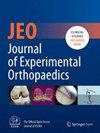Revolutionizing total hip arthroplasty: The role of artificial intelligence and machine learning
Abstract
Purpose
There has been substantial growth in the literature describing the effectiveness of artificial intelligence (AI) and machine learning (ML) applications in total hip arthroplasty (THA); these models have shown the potential to predict post-operative outcomes using algorithmic analysis of acquired data and can ultimately optimize clinical decision-making while reducing time, cost and complexity. The aim of this review is to analyze the most updated articles on AI/ML applications in THA as well as present the potential of these tools in optimizing patient care and THA outcomes.
Methods
A comprehensive search was completed through August 2024, according to the PRISMA guidelines. Publications were searched using the Scopus, Medline, EMBASE, CENTRAL and CINAHL databases. Pertinent findings and patterns in AI/ML methods utilization, as well as their applications, were quantitatively summarized and described using frequencies, averages and proportions. This study used a modified eight-item Methodological Index for Non-Randomized Studies (MINORS) checklist for quality assessment.
Results
Nineteen articles were eligible for this study. The selected studies were published between 2016 and 2024. Out of the various ML algorithms, four models have proven to be particularly significant and were used in almost 20% of the studies, including elastic net penalized logistic regression, artificial neural network, convolutional neural network (CNN) and multiple linear regression. The highest area under the curve (=1) was reported in the preoperative planning outcome variable and utilized CNN. All 20 studies demonstrated a high level of quality and low risk of bias, with a modified MINORS score of at least 7/8 (88%).
Conclusions
Developments in AI/ML prediction models in THA are rapidly increasing. There is clear potential for these tools to assist in all stages of surgical care as well as in challenges at the broader hospital administrative level and patient-specific level.
Level of Evidence
Level III.


 求助内容:
求助内容: 应助结果提醒方式:
应助结果提醒方式:


